The Aster missile family comprises Aster 15 for short to medium range and Aster 30 for short to long range. There is an extensive commonality between the two variants, with both missiles featuring the same terminal dart.
The ASTER missile is described by MBDA as;
The Aster missile family comprises Aster 15 for short to medium range and Aster 30 for short to long range. There is extensive commonality between the two variants with both missiles featuring the same terminal dart. Aster’s terminal dart is a lightweight, highly manoeuvring and agile missile equipped with a high-performance active RF seeker. Thanks to the unique combination of aerodynamic control and direct thrust vector control called “PIF-PAF”, the missile is capable of high manoeuvres. Together, these features give Aster an unmatched hit-to-kill capability.
ASTER is part of the Sea Viper system, a system previously called the Principal Anti-Air Missile System (PAAMS).
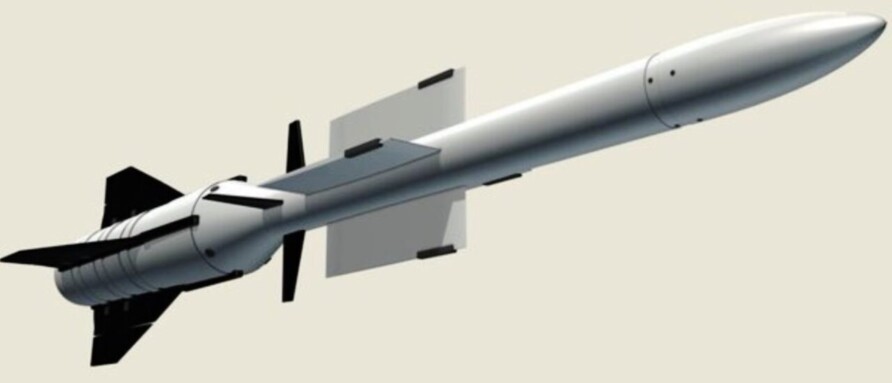
It is currently in service with the UK in the Royal Navy’s Type 45 Destroyers.
Sea Viper (ASTER) History
Like ASRAAM, the Sea Viper missile system has a long, tortuous and complex backstory, essentially, it is a replacement for Sea Dart and the Type 42 Destroyer following recognition of changing threat environments and the need for improved capabilities, reinforced by the Falklands Conflict in 1982.
The NATO Frigate Replacement for the ’90s (NFR-90), was a multinational programme that included France, Germany, Italy, the UK, the United States and Canada. NFR-90 had the perfectly laudable objective of creating a common ship design that could drive standardisation across the alliance partners, reduce costs and, collectively, increase combat strength.
The mission needs document was created in 1979 and the outline staff requirement the year after. Pre-feasibility studies ran until 1982.
In parallel, although not connected at this point. the French Government conducted several feasibility studies for the SYRINX (systemerapide interarmees a base d’engins et fonctionnant en bande X) programme, essentially, a tri-service anti-aircraft missile.
These concluded in 1984 when pre-development contracts were awarded to Thomson-CSF (now Thales) for the Arabel radar and fire-control system and to Aérospatiale (now MBDA Missile Systems) for the Aster missile.
The NATO Frigate project team recognised that the ships would be built locally, and those nations would choose different systems such as anti-ship missiles, but by standardising the basic design and major components, up to 25% savings could be realised.
The project progressed through several milestones until the final study concluded in 1985 with a series of different design variants.
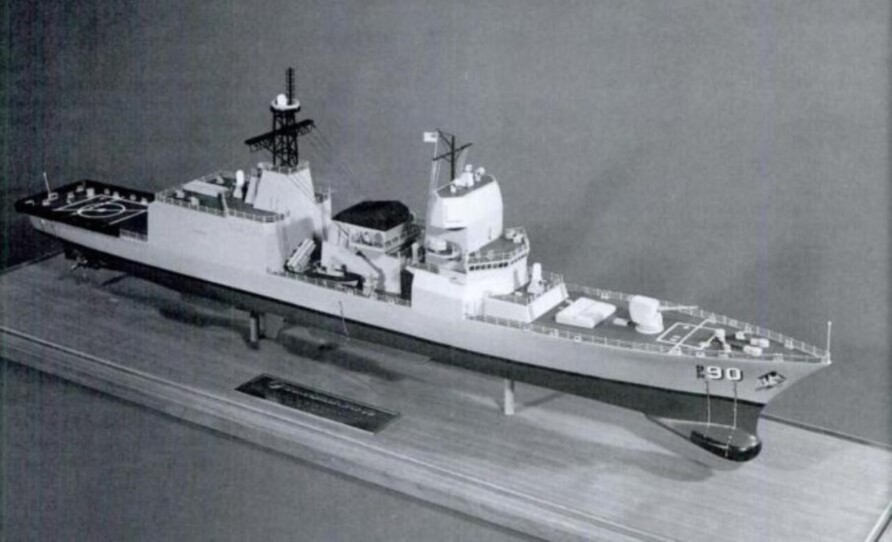
The Baseline (or Atlantic) design was to be a ship of 3,500 tonnes displacement constructed using modular techniques to accommodate different national requirements built in a quantity of 59, the UK planned to take 12.

In parallel with NFR-90, the various partner nations were also involved in one way or another with the anti-aircraft missile issue.
The USA came forward with a proposal for the-the NATO Anti-Air Warfare System (NAAWS) in 1987, initially called the Naval Defence Initiative. This proposed a multinational development to include five of the NFR-90 nations; the Netherlands, Germany, Spain, UK, and the USA.
SYRINX became known as the Future Surface-to-Air Family (FSAF) Camille de systémes anti-ariensfutur) in the late eighties as further development contracts were awarded.
The remaining two NFR-90 nations, France and Italy and instead, proposed the Family of Air Missiles (FAMS). FAMS was a derivative of the already in development Aérospatiale ASTER missile and Thompson-CSF Arabel phased array radar that was intended to protect the new French nuclear-powered aircraft carrier.
France and Italy signed a Letter of Intent in 1987 that agreed to develop the Aster missile system, Aster 15 for the Navy and Aster 30 for the Army.
The UK decided to keep its feet in both camps, the FAMS camp by now including Spain, as well as the UK (BAE and Marconi Defence Systems), Italy and France. UK participation in NAAWS included BAE and Ferranti.
In parallel to NAAWS and FAMS were two studies looking at ground-based air defence, the Medium Surface to Air Missile (MSAM). In October 1987, Belgium, France, Germany, Italy, the Netherlands, Norway, Spain, and the UK began a one-year MSAM study. Independently of the UK’s involvement in MSAM, the government let a 15-month study contract to BAE to investigate options to replace Bloodhound, the UK’s MSAM.
Options were being left open
In 1988, despite this source of potential conflict, the UK joined the NFR-90 project definition stage but Germany had already decided to build the Type 123 Brandenburg class in 1987, thus reducing their NFR-90 requirement. By 1989, with interest waning and costs increasing, the UK, France and Italy, withdrew. A year later, Spain also then withdrew.
And that was the end of NFR-90.
In 1989 a consortium, Eurosam, was established to manage the FSAF programme, now called Aster, with Aérospatiale, Alenia Difesa (now both MBDA Missile systems) and Thomson-CSF (now Thales) as partners.
An exchange in the House of Commons in January 1990 confirmed the cost of the UK’s participation in NFR-90;
Mr. Lofthouse: What was the Government’s initial expenditure on NATO frigate replacement, and why did they withdraw from the project? Does he think that, whatever the costs were, it was a complete waste of taxpayers’ money? Bearing that in mind, does he have plans to ensure that initial expenditure on future projects is kept to a minimum?
Mr. Neubert: There has been no waste of taxpayers’ money. Our participation in the NFR90 project cost £4.5 million, and the value of that work will be reflected in the work that we do on the type 42 successor, which we plan to have in service at the turn of the century or thereabouts.
Back to air defence missiles.
In 1989, the UK was left with a choice.
NAAWS or FAMS.
It chose FAMS.

It was reported that NAAWS was the most capable but more expensive, and that a proposed bid for Ferranti by a merged BAE/Thomson would be contingent on the UK selecting FAMS. The UK variant of FAMS would be called the Local Area Missile System (LAMS). So, the LAMS variant of FAMS would meet the Royal Navy’s Support Defence Missile System (SDMS) requirement.
Are you keeping up?
SDMS was by then intended to equip a new AAW Frigate (not a destroyer) to replace Type 42/Sea Dart, called Future Frigate. The decision to select FAMS for the Royal Navy was formally announced in December 1990.
In 1990, France and Italy formerly entered into a joint development and manufacturing contract for the Aster system after signing contracts with the Euro SAM consortium. Euro SAM comprised Thomson-CSF and Selenia and was to start the SSAF programme that would develop the short-range Aster 15 and medium-range booster equipped Aster 30, together with radar, fore control and launching systems (land and naval).

France would use the Arabel radar and Italy, EMPAR. The two systems would be called Sol-Air Moyenne Portee Terrain (SAMP/T), with Aster 15, and Sol-Air Moyenne Portee Naval (SAMP/N) with Aster 30.
At this point, FAMS contained four missiles, with different ranges and configurations;
- SAAM – Surface Anti-Air Missile (SAAM) with a range of 8km plus range
- SAMP/N – Medium Range Surface to Air Missile (MRSAM), 25km plus range
- SAMP/T – Land launched Medium Range Surface to Air Missile (MSAM), 40km plus range
- LAMS – UK version, Local Area Missile System, 10km plus range
Project Horizon, or the Common New Generation Frigate, was initiated after the NATO Frigate of the ’90s collapsed. The UK, Italy and France signed the Tripartite agreement in early 1992, intending to create a common air defence ship that would meet the needs of all three participants. The simple intention was to achieve some economy of scale by using common systems and enhancing European defence credentials.
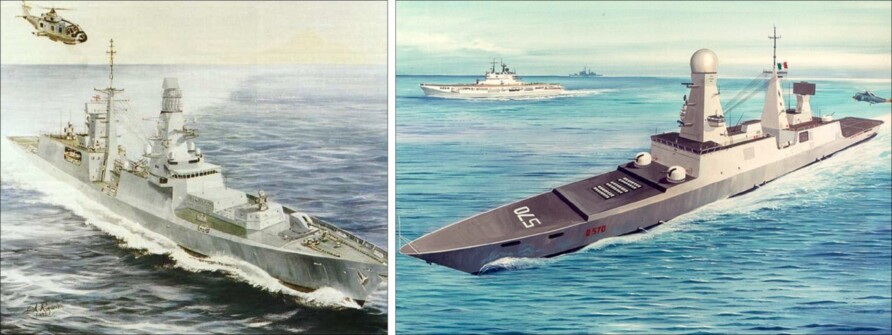
The common systems would be the Aster missile, a vertical launch silo, a central combat management system and a multi-function radar, collectively called the Principal Anti-Air Modular System (PAAMS).
Under PAAMS, LAMS and SAMP/N were merged.
PAAMS would be delivered by EUROPAAMS, a joint venture established in 1993 by EUROSAM comprising Thomson-CSF, Aérospatiale Matra, Alenia Marconi Systems and UKAMS, a subsidiary of Matra BAe Dynamics. Differing requirements and tensions emerged soon, but many of these were resolved by selecting two Multi-Function Radars (MFR), the BAE SAMPSON for the UK and Franco-Italian EMPAR.
The UK always wanted a path to ballistic missile defence for PAAMS and thought EMPAR did not have the sufficient growth potential to meet this future requirement.
The SAMPSON radar system was derived from a technology demonstration programme called Multi-Function Electronically Scanned Adaptive Radar (MESAR) developed by the Defence Research Establishment and Siemens Plessey. (read more about MESA 1 and 2 here)
The first firing of ASTER 30 took place in December 1994.
By 1996 good progress was being made with PAAMS but the ship design itself continued to be problematical, in service slippage and cost increases seemed to plague the project regularly, with the UK’s Type 42 becoming increasingly obsolete, this was a serious concern to the MoD. The UK’s work share was much lower than its intended purchases suggested, another concern.
On top of this, the inability of the partners to agree on a prime contractor structure meant withdrawal was inevitable.
By early April 1998, another five successful tests had been conducted. The lack of a suitable supersonic target meant that no tests were able to be completed against a representative of the Raduga 3M-80 (SS-N-22 Sunburn) missile, but simulations provided some assurance that the system could deal with such supersonic targets. Early concepts were also being developed for a two-stage booster to extend the anti-ballistic missile capabilities of the Aster missile. The MoD had awarded a study contract to BAE for Theatre Ballistic Missile Defence (TBMD) in 1996.
On April 26th, 1999, the UK withdrew from Project Horizon, confirming many months of speculation. Instead of the tri-national collaboration, the UK would go it alone with the Type 45 Destroyer.
The UK withdrew from the platform component but continued with PAAMS.
Commenting on the decision, the Secretary of State for Defence, George Robertson, said;
International procurement must follow the same logic as national procurement, defence can only afford projects which are delivered cost-effectively and on time
A memo to the select committee from British Aerospace Defence Systems in July 1999 described their view of the issues;
The Company is broadly in agreement with the points made by Sir Robert Walmsley in his evidence on CNGF and would like to make some additional comments covering the specification, the need for software and systems integration facilities, the requirement for the alignment of national procurement processes, workshare and difficulties caused by conflicting national interests.
AN OVERLY-COMPLEX SPECIFICATION
The Horizon Technical Statement of Requirement (TSR) was effectively a “super-set” of all the individual national requirements. This inevitably led to an overly-complex solution and associated high development cost. An example of this is the Command Support System (CSS). For France and the UK, a perfectly adequate solution would have been to take the existing national systems (AIDCOMER and GCSS respectively) and fit them as Government Furnished Equipment. However, there was no indigenous Italian solution and they therefore wished to use the Horizon programme as an opportunity to develop a capability which would have given them joint ownership of a new system while paying only one third of the development cost.
SOFTWARE AND SYSTEMS INTEGRATION FACILITIES
The original plan was for the Combat Management System (CMS) software integration to be carried out in Italy and for Combat System Integration to be carried out in France. The UK, under such a scenario would have been unable to maintain a facility for integration of the UK national variant of the combat system and would therefore have been dependent in the future upon French industry to provide the means of evaluating systems upgrades and changes in configuration throughout the life of the ships. Such a strategy may not have been in the long term interests of the UK and the soundness or otherwise of this approach would benefit from further examination in future collaborative programmes.
ALIGNMENT OF NATIONAL PROCUREMENT PROCESSES
Although currently undergoing some change, both French and Italian Government defence procurement methodologies were closer to the pre-Levene era of UK procurement rather than current UK practices either pre or post the introduction of the Smart Procurement Initiative. As a result, the attempt to run a competition on the basis of a level playing field was probably unrealistic. The French and Italian industrial organisations involved in Horizon had different approaches to competition and were not faced with a “winner takes all” situation in an environment where a national workshare deal was inevitable. The enforcement of a best value for money UK-style equipment selection decision was always going to be difficult in such a situation.
THE PROBLEM OF FIXED WORKSHARE
Where political, economic or industrial factors dictate a pre-agreed workshare between members of a consortium, there is inevitably a potential for increased risk. This results from the ownership of a particular element for the overall scope of supply by a single member, regardless of whether that member has the best capability to deliver the eventual solution.
LACK OF CLARITY ABOUT DCN’S ROLE
In the Horizon procurement, the position of the Direction des Constructionnes Navales—part of the French Ministry of Defence, meant that it was overall customer (working with the Delegation General pour L’Armament), a shareholder in the prime contractor organisation (the International Joint Venture Company) and a subcontractor bidding for equipment supply with its HEPICS system in the combat management area. This, combined with the French Government’s support for its national champion impacted significantly on the prospects for a level playing field competition.
In conclusion, a clear lesson from Horizon is that for collaborative programmes to succeed, there is need not only for harmonisation of requirements, programmes and budgets, but for the reconciliation of national procurement policies, industrial organisations and cultural issues. The United Kingdom based its approach on well proven procurement practices, aimed at ensuring value for money, while the other partners had additional agendas relating to the support of national champions or the acquisition of a national technology capability paid for in part by the other partners in the project.
There were also crossover concerns, the UK’s involvement in the MRAV programme was also causing problems in the same time.
A full development contract was placed by the participating nations with EUROPAAMS in August 1999.
Tests and development continued on PAAMS with a series of successful intercepts, including against supersonic targets and those involving scenarios such as friendly aircraft being pursued by enemy aircraft and complex EM environments.
First ASTER Firings
EUROSAM received a €3 billion contract in 2003 for the production of 18 SAMP/T ground-based systems (12 for France and 6 for Italy) and 1,400 ASTER 15 and 30 missiles for the UK, France and Italy.
A 2003 National Audit Office Report on Type 45 provided some details on the UK’s involvement with Horizon. The original approved cost for twelve vessels was circa £6 Billion, as history shows, we still paid circa £6 Billion but got 6 vessels instead of 12. In 2004, the UK joined the Maritime Theatre Missile Defence Forum (MTMD) consisting of Australia, Canada, France, Germany, Italy, The Netherlands, Norway, Spain, the United Kingdom, and the United States.
In 2009, two test firings of an Aster missile from the Longbow trials barge failed at very high G manoeuvres. This set the deployment programme back whilst the issues were resolved.

The PAAMS systems were renamed Sea Viper in January 2009.
From MBDA;
Over the last month, firings have been carried out from the Italian Orizzonte frigate “Andrea Doria”, the French Horizon frigate “Forbin” and the UK trials barge “Longbow” at two different ranges in the Mediterranean. The trials were conducted over a range of scenarios of steadily increasing complexity, culminating in a final trial featuring a salvo firing against a sea skimming target performing a high-g terminal manoeuvre. All the trials were fully successful with both the PAAMS ship equipment and Aster missiles operating as expected in each case. This draws to a close the complex and high intensity investigation launched within MBDA after problems encountered in two firing trials last year
It was reported that the failures were due to a manufacturing process change precipitating an unexpected failure mode.
It was revealed how much the development of Sea Viper had cost the UK in a July 2009 Written Answer

Approximately £2.6 Billion, noting that production costs of PAAMS were not included in that figure.
In 2010, HMS Dauntless became the first Royal Navy vessel to fire an Aster missile
Captain Richard Powell, Commanding Officer of HMS Dauntless, said:
This firing is the culmination of a series of trials of Sea Viper as the ship moves towards acceptance into the Royal Navy. Both my ship’s company and the equipment manufacturers have done a sterling job in preparing for and conducting the test. We are delighted with the success of this firing which is particularly important for the UK as the Sea Viper system will also work in support of land and air forces
Richard Smart, Head of Team Complex Weapons at the MOD, said:
Sea Viper is one of the most advanced weapons systems in the world. Its ability to engage multiple targets gives the Royal Navy unparalleled protection from air attack which, together with the ship’s speed and agility, makes the Type 45 a truly formidable fighting force. The first firing from HMS Dauntless is a fantastic achievement that has successfully built on the weapon system’s extensive qualification programme
At Naval Command Headquarters, news of the successful first firing at sea from a Royal Navy warship was received warmly by the Chief of Staff (Capability), Major General Garry Robison. He said:
This is an essential milestone in the development of Type 45 capability and is the culmination of much successful co-operation between MOD and industry
2011 also saw the first ASTER test firing against a theatre ballistic missile (TBM) target, an Israeli Black Sparrow, fired from an F-15. The Black Sparrow is designed to simulate a SCUD-B ballistic missile.
By 2012, other Type 45’s had conducted their test firings and MBDA had produced their thousandth ASTER missile. A successful test had also been conducted against a supersonic sea-skimming target, the ATK GQM-163A Coyote, flying at 5m and Mach 2.5.
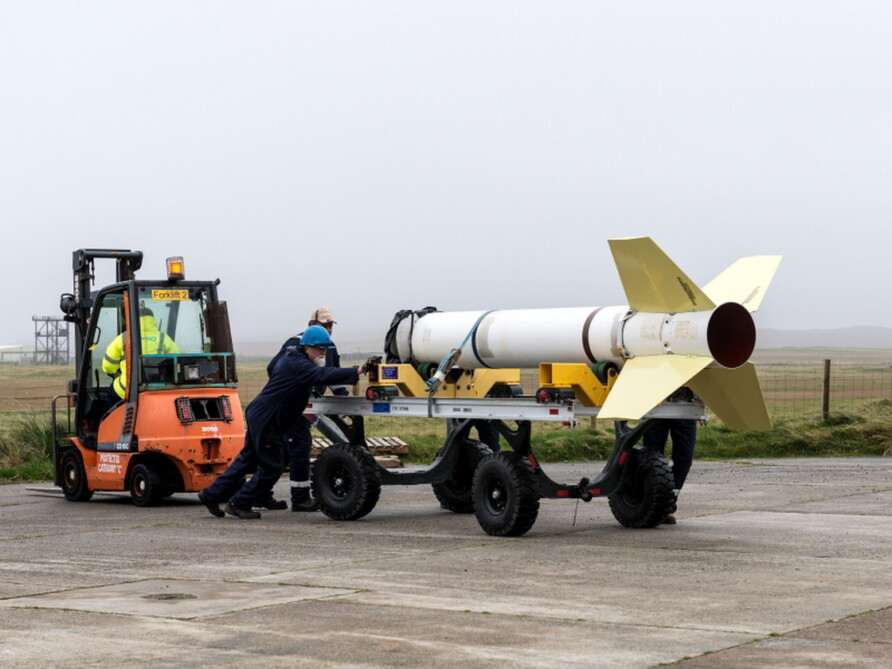
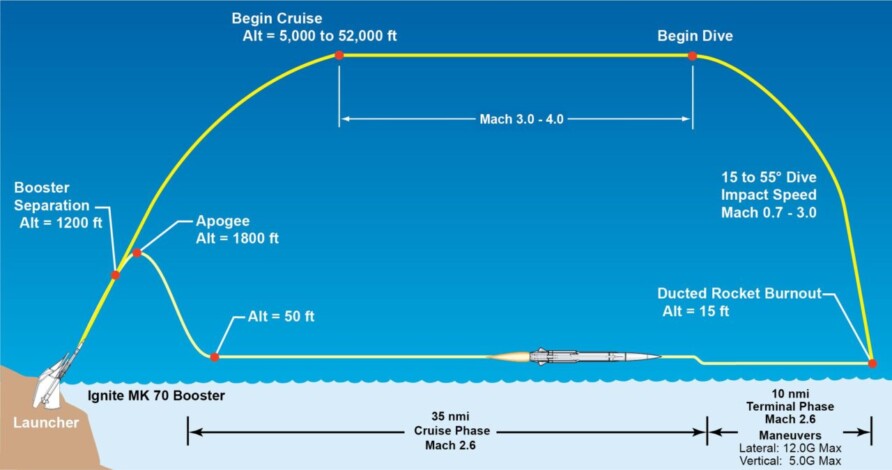
The Longbow trials barge was recycled in Turkey in 2012.
In 2013, HMS Daring demonstrated the ability of Sea Viper to detect and track two medium-range ballistic missile targets at the US Reagan Test Site in the Marshall Islands. This was the culmination of a research stream that had started around 2000 and the MESAR research programme., leading to the £10 million Type 45 Science and Technology Programme (TSAT)
The 2015 Strategic Defence and Security Review stated;
We will continue to commit significant funds to the NATO Ballistic Missile Defence (BMD) network, as well as support research and development initiatives and multinational engagement through the UK’s Missile Defence Centre. We will also investigate further the potential of the Type 45 Destroyers to operate in a BMD role
The At Sea Demonstration 2015 (ASD15) was a multinational exercise in which members of the Maritime Theatre Missile Defence (MTMD) Forum conducted a number of operationally realistic tests of maritime ballistic missile defence.
ASD15 was a serious and impressive demonstration of capability and clearly set the roadmap for further development of the Sea Viper as a ballistic missile defence system working with allies, funding permitting.
In early 2016, the French DGA launched an upgrade programme that included the Block 1 NT (New Technology) missile.
The French Ministry of Defence has launched the Aster Block 1 NT (New Technology) program aimed at modernizing the surface-to-air missile platform/terrain (SAMP/T) ground-based air defence system as well as its associated Aster missile. The French Direction Générale de l’Armement (DGA) announced the contract to the EUROSAM consortium, which includes MBDA and Thales, on December 23, 2015.
This contract provides for the development of a new version of the Aster 30 Block 1 missile, referred to as Aster B1 NT, with first deliveries to the French Air Force expected in 2023. It also covers the modernization of the current SAMP/T system to provide enhanced capabilities, particularly against ballistic missiles. This evolution will enable SAMP/T to further enhance its contribution towards NATO’s anti-ballistic missile defence programme.
France’s Aster programme is led by the DGA, with the support of OCCAR (Organisation Conjointe de Coopération en matière d’Armement), the European intergovernmental organization for joint armament cooperation.
Italy was expected to join France in the Aster B1 NT program in the following months. Italy’s ground-based air defence units are similarly equipped with the SAMP/T system.
For quite some time, the UK, Italy and France have cooperated on the ground and naval air defence systems based on the Aster missile. This cooperation was reaffirmed by the signing of a Memorandum of Understanding by the three nations on December 11, 2015
This upgrade, which includes a new Ka-band seeker from Thales and various software improvements, will allow the Aster missile to engage short-range ballistic missiles (1,000 km range) and some flight segments of medium-range ballistic missiles. First deliveries are planned to commence in 2023.
The agreement was formally signed between France and Italy at Eurosatory, on the 15th of June 2016.
Today marks a very important date for European defence cooperation and for MBDA in particular. The Aster missile programme is Europe’s most ambitious tactical missile programme. The two countries, which have carried out this programme for many years, have just laid out a robust route map that will see the Aster programme well into the next decade, which will help to sustain industrial know how for many years to come and which is key to ensuring French and Italian sovereignty. Aster is in fact much more than a missile. It is a whole family of air defence and anti-missile systems which has been adopted by 11 armed forces around the world. Aster represents the leading edge of worldwide military capability and as such serves to consolidate the European missile industry
MBDA was awarded a £175m sustainment contract in 2017
MBDA has received a £175 million contract from the UK Ministry of Defence (MoD) for further In-Service Support to the Sea Viper weapon system, securing a key capability of the Type 45 fleet.
Called ‘Sea Viper Unified Support Environment Period 1’, the contract will cover the continuing in-service support to the Sea Viper weapon system, including the Aster missile that protects the Royal Navy’s Type 45 destroyers, for the next 5 years. The Unified Support Environment (USE) is the principle of providing in-service support to UK MoD Weapon Systems and Missiles in a portfolio environment. The USE approach is designed to reduce support workload and administrative costs and has already been successfully applied to several other MBDA programmes, including ASRAAM, Brimstone and Storm Shadow.
The work will sustain around 50 MBDA UK jobs, primarily at Stevenage, Portsmouth, and Bristol and will also involve a large number of UK companies in the supply chain as well as MBDA France and MBDA Italy.
The Formidable Shield exercise continues to test and develop allied capability against complex air threats.
In 2021, the MoD announced a £500m contract for the Mid-Life Refresh of the Aster missiles and the integration of the Common Anti-Air Modular Missile (CAMM) into the Sea Viper combat system.
MBDA UK has been awarded an 11-year contract to integrate the Common Anti Air Modular Missile (CAMM) into the Type 45 destroyer’s Sea Viper weapon system. In addition to this, a 10-year contract with Eurosam will provide an Aster Mid-Life Refresh (MLR) programme of work to missiles that the Type 45 destroyers currently use.
To facilitate the introduction of CAMM to the vessels, a new 24-missile CAMM silo will be added in front of the current 48-missile Aster 30 silos, therefore increasing the overall missile capacity of the vessels by 50% with a total capacity of 72 anti-air missiles per destroyer. CAMM also provides a means to accurately and effectively engage small, fast inshore attack craft, hovering helicopters and low-speed targets alongside defeating their more traditional high-speed air targets.
The Aster 30 missile system refresh is a tri-national sustainment and enhancement contract between the UK, France and Italy which includes investment in a dedicated UK embodiment facility at Defence Munitions in Gosport, Hampshire.
The first Type 45 destroyer is expected to have been overhauled by summer 2026.
SV-CAMM is planned to achieve Initial Operating Capability (IOC) in early 2027 with the whole fleet rollout complete by the end of 2032.
MBD describe this as
MBDA has been awarded a number of contracts to significantly upgrade the air and missile defence capabilities of the Royal Navy’s six Type 45 destroyers.
The work will see CAMM (Common Anti-Air Modular Missile) paired with an upgraded Sea Viper command and control (C2) system for the first time. CAMM offers both world-leading close-in and local-area air defence, and will complement Aster 30, strengthening the anti-air defence capability of the Royal Navy.
Fitting CAMM onto the Type 45s will give the destroyers a 50% increase in the number of its air defence missiles. Installation will be via 24 additional launcher cells, and the Sea Viper C2 will get a technology upgrade, giving it a major increase in processing power.
The existing 48 Sylver cells on the Type 45 will now be solely for the longer-range Aster 30 missile, which is also subject to a recently announced mid-life refresh. This will see the missile remain in service throughout the life of the Type 45s.
CAMM has already been delivered to both the British Army and the Royal Navy, where it is the interceptor in both ground-based air defence (GBAD) and naval-based air defence (NBAD) systems, enabling these services to equip missiles from a shared stockpile.
In service on upgraded Royal Navy Type 23 frigates, CAMM will also be fitted to Type 26 and Type 31 in the future. The CAMM family has proven a rapid success with international customers, with Canada and Brazil among the new users ordering the missile this year.
In response to a Defence Select Committee investigation, the MoD responded to a specific question on Ballistic Missile Defence.
As set out in the Defence Command Paper, we committed to upgrading the Sea Viper air defence missile system for the Type 45 by the late 2020s to provide a Ballistic Missile Defence (BMD) capability for the RN and wider Defence. Sea Viper Evolution (SVE) will deliver the capability that will protect maritime units from a range of Ballistic Missile threats by the late 2020s. The Integrated Review funded SVE Capability 1, upgrading the RN’s missiles to the ASTER Block 1 standard. The RN will also conduct an Assessment Phase of SVE Capability 2, to further enhance this capability and cover a greater range of threats, utilising the ASTER Block 1 “New Technology” missile. This investment forms part of the strategic intent for the UK to have a maritime BMD capability and will deliver the first European warship capable of an organic “sensor to shooter” BMD intercept. Further concepts for BMD will be considered and refined, including a counter-hypersonics capability, as we develop and procure the Future Air Defence System as the replacement for the Type 45 Destroyers.
As can be seen from above, all RN Aster missiles were intended to be upgraded to Block 1 standard.
In January 2024, the MoD let a £450m contract to MBDA for enhancements and support for the next five years.
The missile upgrades comprise three contracts awarded to MBDA UK, including two to significantly enhance the Sea Viper capability on board Type 45 warships, and a third to cover enhanced in-service support and availability of the system for the next five years
The Sea Viper enhancements aim to deliver Ballistic Missile Defence Capability to counter more complex threats, while providing an opportunity for further upgrades and increased capability to be taken forward into future systems.
The initial stage of the contract will upgrade the Royal Navy’s existing Aster 30 missiles to Aster 30 Block 1, which will enable defence against anti-ship ballistic missile threats, and will see modifications to the fleet’s Multi-Function Radar (Sampson), Command and Control system and Combat Management System.
The subsequent stage of the Sea Viper evolution will evaluate the introduction of the new Aster 30 Block 1NT missile. Currently under development with France and Italy, it features a new seeker that would even further enhance the ballistic missile defence capabilities of the UK’s Type 45 destroyers.
Full Operating Capability was forecast to be Autumn 2032.
Initial concept work on the Future Air Dominance System (FADS) started in 2023, part of the wider programme to replace Type 45.
As part of freedom of navigation operations in the Red Sea, on April 27th 2024, HMS Diamond shot down a missile fired by Iranian backed Houthis on a merchant vessel, reportedly, the MV Yorktown.
The MoD released some imagery of the engagement, including one showing the VLS, nearing its efflux marks.
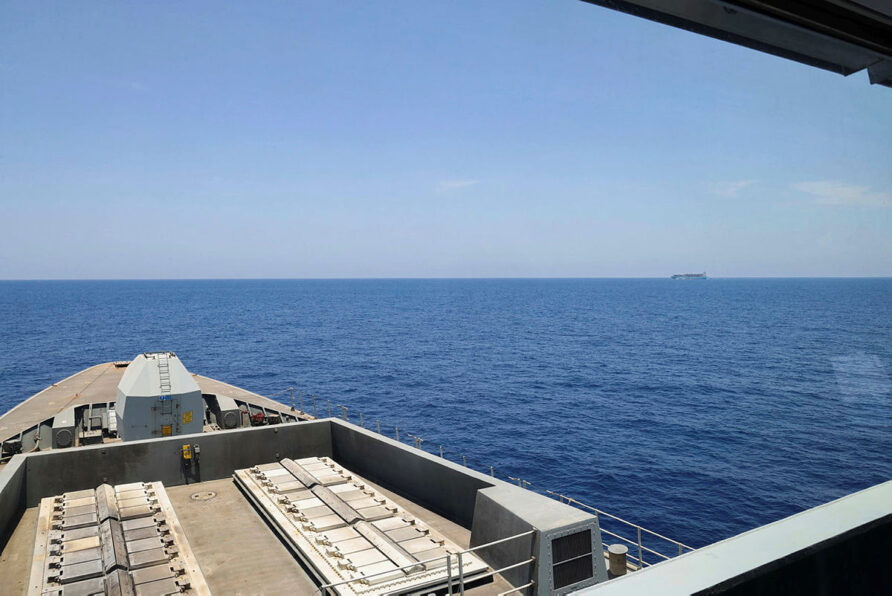
Work continued through 2024 on the Sea Viper Enhancement — Capability 2, including the Aster 30 Block 1NT missile.
Before reading on, would you mind if I brought this to your attention?
Think Defence is a hobby, a serious hobby, but a hobby nonetheless.
I want to avoid charging for content, but hosting fees, software subscriptions and other services add up, so to help me keep the show on the road, I ask that you support the site in any way you can. It is hugely appreciated.
Advertising
You might see Google adverts depending on where you are on the site, please click one if it interests you. I know they can be annoying, but they are the one thing that returns the most.
Make a Donation
Donations can be made at a third-party site called Ko_fi.

Think Defence Merch
Everything from a Brimstone sticker to a Bailey Bridge duvet cover, pop over to the Think Defence Merchandise Store at Red Bubble.
Some might be marked as ‘mature content’ because it is a firearm!
Affiliate Links
Amazon and the occasional product link might appear in the content, you know the drill, I get a small cut if you go on to make a purchase
Sea Viper (ASTER) Capabilities
The Principal Anti-Air Missile System (PAAMS) is called Sea Viper in UK service and comprises several components.
Technically, the UK has the PAAMS(S) with the S denoting Sampson, or Sea Viper, depending on what sources one reads.
- SYLVER Vertical Launch System
- ASTER Missiles
- Long-Range Search Radar
- Fire Control System based on the SAMPSON Multi-Function Radar
SYLVER Vertical Launch System
SYLVER (SYstème de Lancement VERtical) is a comparable vertical launch system to the US Mk41, designed by DCNS. There are four variants, each of a different depth and configuration.
- Sylver A35, for antimissiles and air-defence
- Sylver A43, for self-defence missiles
- Sylver A50, for tactical missiles
- Sylver A70, for deep-strike missiles
Type 45 Destroyers use the A50 configuration, six of them, for a total of 48 cells.
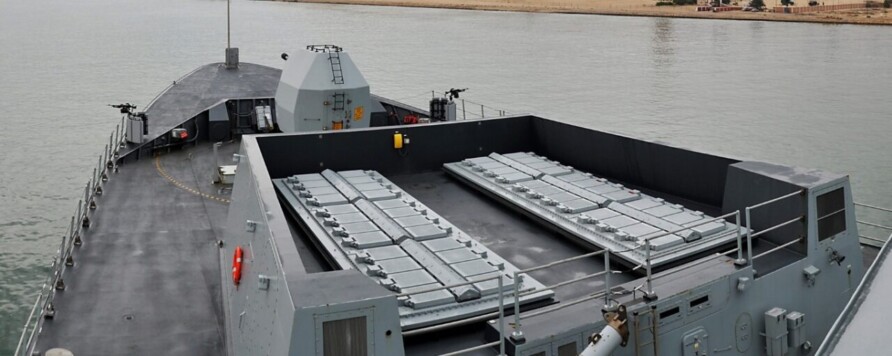
The upper plate, missile hatches and the centre line pressure-controlled uptake hatch form a watertight, RATTAM (Response to ATTack on AMmunition) proof assembly
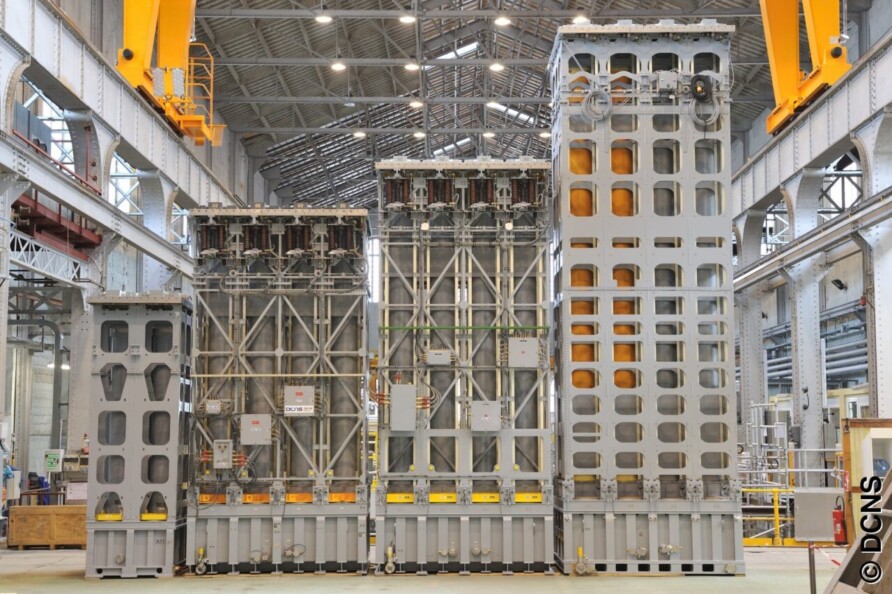
As can be seen from the graphic below, different missiles fit in different VLS configurations.

ASTER Missiles
There are two variants of the ASTER missile in service with the UK, ASTER 15 and ASTER 30 Block 0 (being upgraded to Block 1)
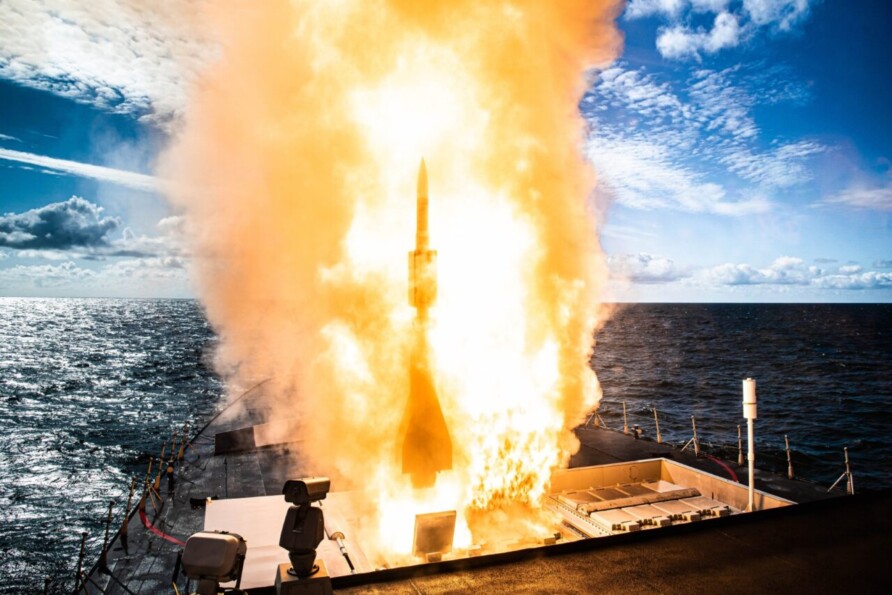
The ASTER 15 missile weighs 310 kg and is 4.2m long, and the ASTER 30 missile weighs 450 kg and is 4.9m long. Both are of a two-stage design, with a booster that falls away mid-flight and an identical main missile body.
ASTER 30 has a larger booster than ASTER 15, reflective of its range and role.
ASTER 15 is generally reported to have a range and altitude of 1.7 km to 40 plus km and 13 km respectively, and a maximum speed of Mach 3.5.
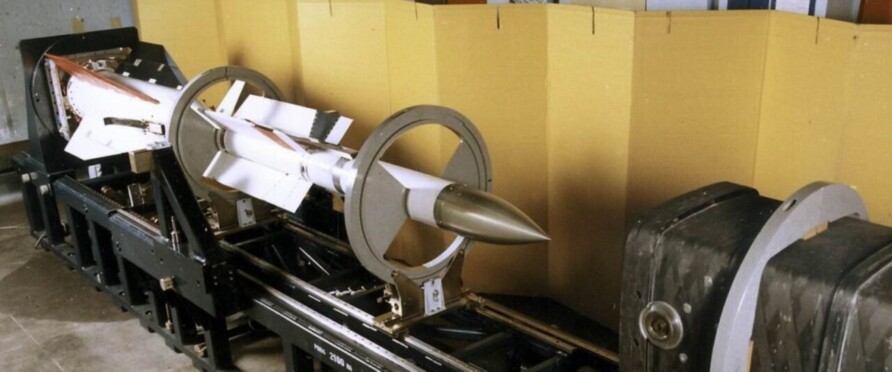
Aster 15 EC (Enhanced Capabilities) was announced in early 2024, and will reportedly align with some features of Aster 30 Block 1 NT, whilst maintaining the same physical dimensions of Aster 15. The enhancement package will reportedly double the range whilst reducing the minimum engagement range.
Aster 15 EC is expected to enter service with Italian and French naval vessels from 2027.
ASTER 30 is generally reported to have a range and altitude of 3 km to 120 plus km and 20 km respectively, and a maximum speed of Mach 3.5.

The blast fragmentation warhead is initiated by a Thales dual contact/proximity fuze and guidance is provided by a combination of off-board direction and onboard active RF seeker.
The missile is characterised by extreme manoeuvrability, up to 60g, derived direct thrust vector approach called PIF/PAF (Pilotage enforce/Pilotage aerodynamique fort, inertial steering by force/aerodynamic steering by force) and large control surfaces.

The rocket motor is manufactured by Avio.
This video from the Marine National of operations in the Red Sea in 2024 demonstrates the extreme agility of the Aster missile.
Within the ASTER 30 family, there are a number of sub-variants;
ASTER 30 Block 0; In service with the Royal Navy and others.
ASTER 30 Block 1; Part of the Italian/French SAMP/T land-based air defence system with dual capability against ballistic and conventional missiles. This version has updated seeker software not found in Block 0 and proven as part of previous SAMP/T development activities.
RN Aster missiles will be upgraded to this standard, and will also include a new warhead design.
ASTER 30 Block 1NT (new Technology); Developed for France and Italy, utilising a new seeker and other improvements to provide enhanced capabilities against tactical ballistic missiles and some capabilities against medium-range ballistic missiles.
ASTER 30 Block 1NT is fully compatible with existing SYLVER A50 VLS cells.

Block 1NT will also enter service with the Royal Navy.

ASTER 30 Block 2; is yet to be developed, but is reportedly a new (and wider) missile capable of high-endoatmospheric BMD interceptions. There is some confusion about this often being termed Aster 45, but Aster 45 was another concept for a larger booster, but one that still used the Aster 30 missile.
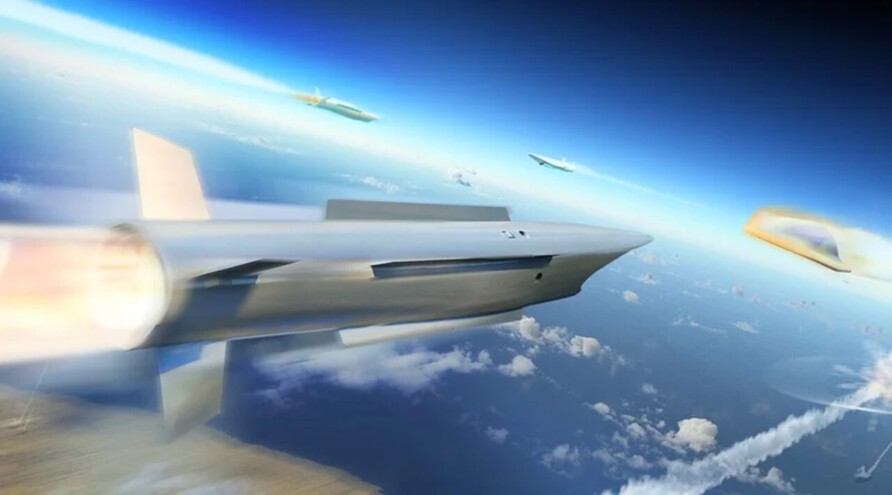
The Road to Ballistic Missile Defence
The path to ballistic missile defence capability depends on what kind of ballistic missile we are talking about.
The baseline Aster missile does have some limited capability against short range ballistic missiles, but since its introduction, the development path has been intended to increasingly improve capability against a wider target set.
Although the 2015 SDSR made several supportive statements on ballistic missile defence, there was no specific requirement defined. That said, the Royal Navy was involved in a number of research and collaborative programmes over the years, building up a solid body of experience on which to expand the already hugely impressive Sea Viper system into.
One of the recent emergent threats is the Anti-Ship Ballistic Missile (ASBM), the Chinese DF-21, for example. The first phase of the roadmap to ballistic missile defence would be to address the anti-ship ballistic missile, a threat to deployed naval shipping.
The Block 1 ASTER 30 missile, in service with the land-based SAMP/T system, is capable of defeating short-range ballistic missiles. The difference between Block 1 and Block 0 missiles, the same Block 0 missiles in service with the Royal Navy, is a software upgrade (subsequently, also a new warhead)
MBDA has stated that this Block 0 to Block 1 upgrade would be completed at the Munition Maintenance Facility at Gosport. The required software enhancements for the combat management system were demonstrated in 2013 as part of the Type 45 Science and Technology Demonstration (TSAT).
MBDA completed a Project Definition and Risk Reduction study in 2015 for an Initial Anti-Ship Ballistic Missile Defence Capability.
As above, the Royal Navy moved toward this capability with confirmation of the upgrade to Block 1 missiles, and subsequently to Block 1NT, as described in multiple contracts above.
Block 1NT will enable engagement of medium range ballistic missiles.
Although not specifically related to Sea Viper, MBDA is also working on a system called Aquila that will address the threat from manoeuvring ballistic missiles, hypersonic cruise missiles and hypersonic glide vehicles.
Aquila is proposed as a component of the Twister programme.

It is not known if the UK will participate in the European TWISTER programme, or Aquila.
Long-Range Search Radar
The Type 1046 radar is a derivative of the Thales Netherlands SMART-L radar, also known as the S1850M. The role of the S1850M is to identify threats at long range and in large volumes, passing the data into the Sea Viper Combat Management System (CMS).
BAE describe it as;
S1850M is a long-range radar for wide-area search. With fully automatic detection and track initiation, it can track up to 1,000 air targets at a range of around 400 kilometres. The S1850M provides 3-dimensional track/plot data of the tactical threat and its own forces within the operational environment.
The S1850M is also fitted to the QE Class aircraft carriers.

The S1850M is the large black radar on the aft mast in the image above.
Fire Control System based on the SAMPSON Multi-Function Radar
SAMPSON is derived from the earlier Multi-Function Electronically Scanned Adaptive Radar (MESAR) programme and is an advanced multi-function S-Band radar providing both search, precision tracking and fire control, central to the PAAMS/Sea Viper System.

Designed to operate in a heavy clutter and ECM environment, it is also designed to be highly robust and resilient. Each of the two arrays has two thousand radiation elements and the distinctive antenna housing rotates at 30rpm to provide high throughput 360-degree coverage.
Operations Console
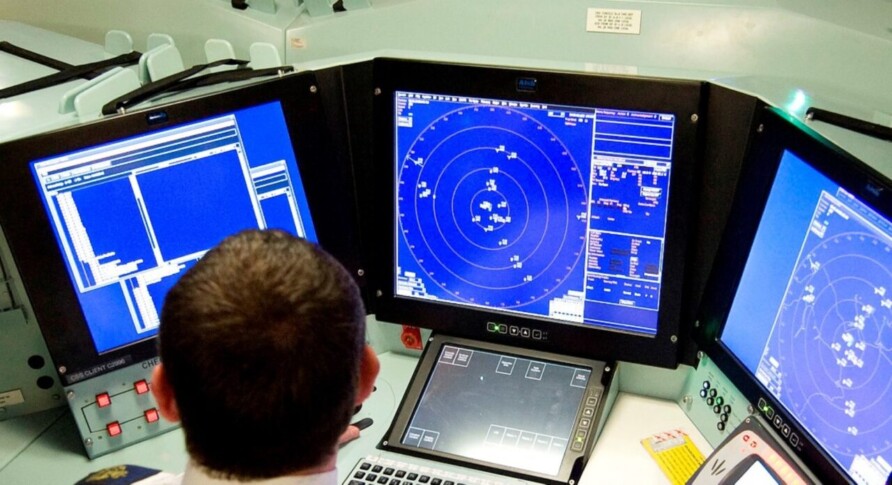
The radar is placed as high as possible to extend the distance to the horizon for the detection of sea-skimming missiles. The combat management system integrates the information from both SAMPSON and the S1850. Tests have shown the system capable of simultaneously tracking a high number of targets including aircraft, ballistic missiles and conventional missiles.
SAMPSON, together with the combat management system and other components, make Sea Viper extremely effective. Although true performance rightly remains classified, anecdotally, it is said to be world-beating.
Click HERE to read about other UK Complex Weapons
Change Status
| Change Date | Change Record |
| 01/03/2017 | Initial issue |
| 16/07/2021 | Format update |
| 03/10/2022 | Addition of SV-CAMM and SV Capability 2 |
| 04/05/2024 | General update in history and capabilities |
Read more (affiliate link)

Discover more from Think Defence
Subscribe to get the latest posts sent to your email.


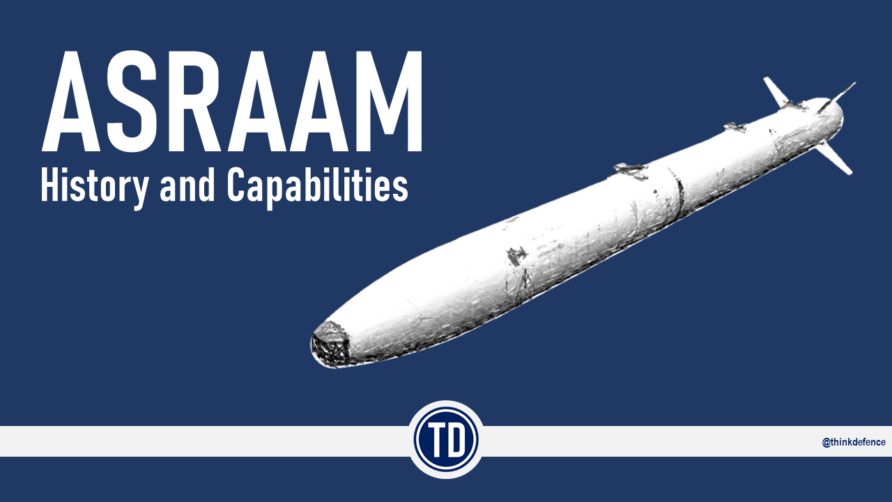


this is amazing information!!
Hello TD
"Click HERE to read about other UK Complex Weapons" this HERE link reads to an error!
Great article and a top site.
Thanks Alex, fixed!